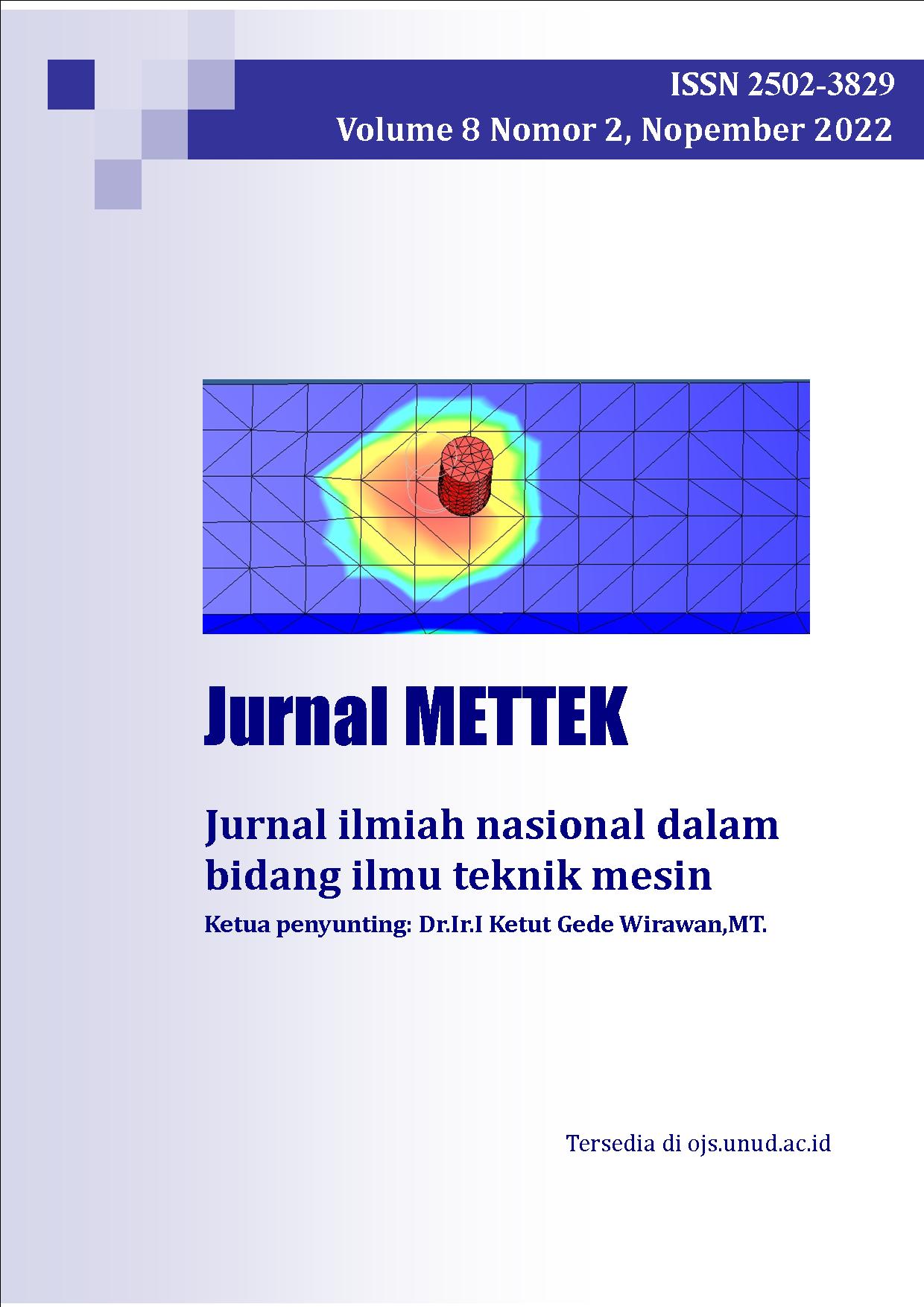Simulasi CFD Pertukaran Udara di Ruang Tindakan Klinik Kesehatan
-
Abstract
Klinik kesehatan merupakan fasilitas pelayanan kesehatan. Klinik kesehatan adalah bangunan yang penuh dengan sumber infeksi, terutama infeksi melalui udara. Pengendalian infeksi virus melalui udara dapat dilakukan dengan kontrol engineering yaitu dengan penambahan sistem ventilasi dan untuk mencapai kenyamanan termal ruangan maka dibutuhkan sistem pengkondisian udara. Penambahan sistem ventilasi mekanis berupa exhaust fan dan inflow membuat adanya sirkulasi udara dimana udara segar dimasukan melalui saluran inflow dan udara kotor dikeluarkan melalui saluran exhaust fan sehingga resiko penularan virus melalui udara dapat diminimalkan. Pola aliran dari sirkulasi udara penting dilakukan analisis karena agen infeksius yang ringan cendrung mengikuti pola aliran. Untuk mengetahui pola aliran dan pengaruh dari jumlah exhaust fan serta sudut flapper AC dilakukan dengan metode simulasi CFD (Computational Fluid Dynamics) serta dilakukan pengujian secara eksperimen yaitu pengukuran tekanan dan temperatur serta kelembaban udara relatif. Variasi sudut flapper AC pada pengujian tanpa penambahan sistem ventilasi memberikan pengaruh terhadap input aliran sehingga titik-titik vortex terjadi pada posisi yang berbeda-beda. Sedangkan sudut flapper AC pada penambahan sistem ventilasi tidak dominan memberikan pengaruh terhadap pembentukan pola aliran. Penambahan inflow dan exhaust fan menunjukan terjadi superposition flow. Sedangkan variasi jumlah exhaust fan menunjukan semakin banyak jumlah exhaust fan maka kecepatan aliran udara diruangan menjadi meningkat dan tekanan udara ruangan menurun serta sirkulasi aliran dalam ruangan menjadi lebih merata.
The health clinic is facilities of health service. A health clinic is building fully on the infection source, especially airborne infection. The spread of virus control from the air can perform by engineering control such as added mechanical ventilation system and to reach the thermal comfort, a system of air conditioning is needed. In addition, a mechanical ventilation system that is an exhaust fan dan inflow can create the air circulation where fresh air enters through inflow channels and dirty air goes out through exhaust fan channels, so the risk of airborne infection can be reduced. The airflow pattern from air circulation is important for analysis because infectious agents which are light in weight that tend to follow the airflow pattern. To find out the airflow pattern and influence from variations of the number of exhaust fans as well as the angle of the AC flapper, it is done using the CFD (Computational Fluid Dynamics) simulation method and carried out experimental tests, namely the measurement of pressure and temperature. The angle of the AC flapper tested without added ventilation system influenced the input of stream from AC blower then, the position of vortex had indifference location. While the angle of the AC flapper tested with the additional mechanical ventilation system did not influence airflow pattern formation. Added inflow dan exhaust fan showed the occurrence of the superposition flow. While the more of the number exhaust fans shows, the velocity of air in the room increases and the indoor pressure is decreasing as well as the air circulation in the room becomes more equally.
Downloads

This work is licensed under a Creative Commons Attribution-NonCommercial-ShareAlike 4.0 International License.

This work is licensed under a Creative Commons Attribution-NonCommercial-ShareAlike 4.0 International License.







